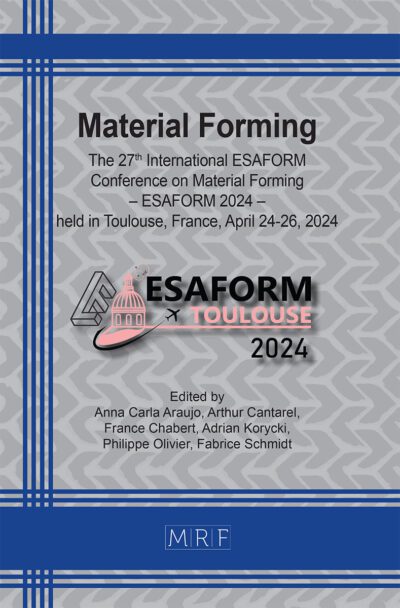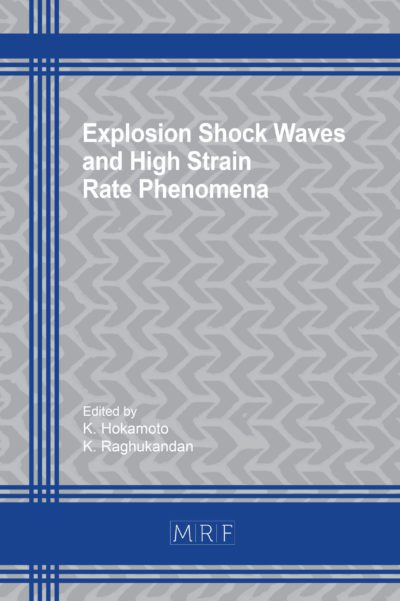Mechanical properties of AFP-manufactured CF/PEEK vs CF/LM-PAEK ring coupons: Impact of process parameters on shear strength
Vincenzo IANNONE, Felice DE NICOLA, Giovangiuseppe GIUSTO, Mario COSTANTINI, Giovanni BRUNO, Pierpaolo CARLONE
Abstract. Carbon fiber-reinforced thermoplastic composites such as CF/PEEK and CF/LM-PAEK are increasingly utilized in aerospace applications for their outstanding mechanical properties, including high strength-to-weight ratios and environmental resistance. To fully exploit these advantages in complex aerospace components, advanced manufacturing techniques such as Automated Fiber Placement (AFP) are employed, enabling precise control over fiber orientation and consolidation. However, achieving optimal shear strength requires precise control of automated fiber placement process parameters. This study investigates the mechanical performance of two-layer CFRTP coupons in-situ consolidated using hot gas torch AFP. A Design of Experiments approach was employed, systematically varying deposition rates, heat source settings and compaction pressures. Statistical analysis of the experimental results highlights the influence of these parameters on the single lap shear strength. Using experimental data, linear regression models were developed to analyze the relationships between the shear strength and key process parameters, including laydown speed, pressure, and temperature profiles. The results reveal distinct behaviors between CF/PEEK and CF/LM-PAEK, providing insights into optimizing AFP manufacturing processes.
Keywords
AFP, CFRTP, Mechanical Testing, Advanced Manufacturing, SLS
Published online 5/7/2025, 10 pages
Copyright © 2025 by the author(s)
Published under license by Materials Research Forum LLC., Millersville PA, USA
Citation: Vincenzo IANNONE, Felice DE NICOLA, Giovangiuseppe GIUSTO, Mario COSTANTINI, Giovanni BRUNO, Pierpaolo CARLONE, Mechanical properties of AFP-manufactured CF/PEEK vs CF/LM-PAEK ring coupons: Impact of process parameters on shear strength, Materials Research Proceedings, Vol. 54, pp 429-438, 2025
DOI: https://doi.org/10.21741/9781644903599-47
The article was published as article 47 of the book Material Forming
![]() Content from this work may be used under the terms of the Creative Commons Attribution 3.0 license. Any further distribution of this work must maintain attribution to the author(s) and the title of the work, journal citation and DOI.
Content from this work may be used under the terms of the Creative Commons Attribution 3.0 license. Any further distribution of this work must maintain attribution to the author(s) and the title of the work, journal citation and DOI.
References
[1] P. Boisse, R. Akkerman, P. Carlone, L. Kärger, S. V. Lomov, J. and A. Sherwood, Advances in composite forming through 25 years of ESAFORM, Int J Mater Form, 15 (2022). https://doi.org/10.1007/s12289-022-01682-8
[2] H. Parmar, T. Khan, F. Tucci, R. Umer, and P. Carlone, Advanced robotics and additive manufacturing of composites: towards a new era in Industry 4.0, Materials and Manufacturing Processes, 37 (2022). https://doi.org/10.1080/10426914.2020.1866195
[3] I. Schiel, L. Raps, A. Chadwick, I. Schmidt, M. Simone, and S. Nowotny, An investigation of in-situ AFP process parameters using CF/LM-PAEK, Advanced Manufacturing: Polymer & Composites Science, 6 (2020), 191–197. https://doi.org/10.1080/20550340.2020.1826772
[4] V. Iannone, F. De Nicola, M. Costantini, G. Giusto, and P. Carlone, Investigating TP-AFP process parameters through a mechanical testing approach, Materials research proceedings, 2024. https://doi.org/10.21741/9781644903131-66
[5] S. Shafaq, J. J. Sharpe, K. A. Smith, and L. S. Thompson, Parametric process optimization of automated fiber placement-based AS4/APC-2 composites for improved fracture toughness, Composite Structures, 58 (2024) https://doi.org/10.1177/00219983241283598
[6] G. Dai, L. Zhan, C. Guan, and M. Huang, The effect of moulding process parameters on interlaminar properties of CF/PEEK composite laminates, High Performance Polymers, 32 (2020), 835–841. https://doi.org/10.1177/0954008320903768
[7] R. Krueger and A. Bergan, Advances in Thermoplastic Composites Over Three Decades – A Literature Review, NASA/TM–20240005376, 2024.
[8] F. Islam, M. J. Donough, E. Oromiehie, A. W. Phillips, N. A. St John, and B. Gangadhara Prusty, Data-driven optimization of additive composite manufacturing using automated fibre placement: A study on process parameters effects and interactions, Composites Part A: Applied Science and Manufacturing, 190 (2025). https://doi.org/10.1016/j.compositesa.2024.108599
[9] C. M. Stokes-Griffin, P. Compston, The effect of processing temperature and placement rate on the short beam strength of carbon fibre–PEEK manufactured using a laser tape placement process, Composites Part A: Applied Science and Manufacturing, 78 (2015). https://doi.org/10.1016/j.compositesa.2015.08.008
[10] M. Di Francesco, M. A. Valverde, C. Ward, P. Giddings, G. Dell’Anno, K. Potter, Influence of Layup Speed on the Quality of Thermoplastic Preforms Manufactured by Laser-Assisted Automated Fibre Placement, 2016
[11] Á. Alvaredo-Atienza, L. Chen, V. San-Miguel, Á. Ridruejo, and J. P. Fernández-Blázquez, Fabrication and Characterization of PEEK/PEI Multilayer Composites, Polymers, 12 (2020). https://doi.org/10.3390/polym12122765
[12] S. G. Miller, P. J. Heimann, A. J. Miller, D. A. Scheiman, and L. S. McCorkle, Manufacturing and Mechanical Testing of TC1225/LM-PAEK and TC1200/PEEK Thermoplastic Composite Panels, NASA/TM-20220015690, 2023.













